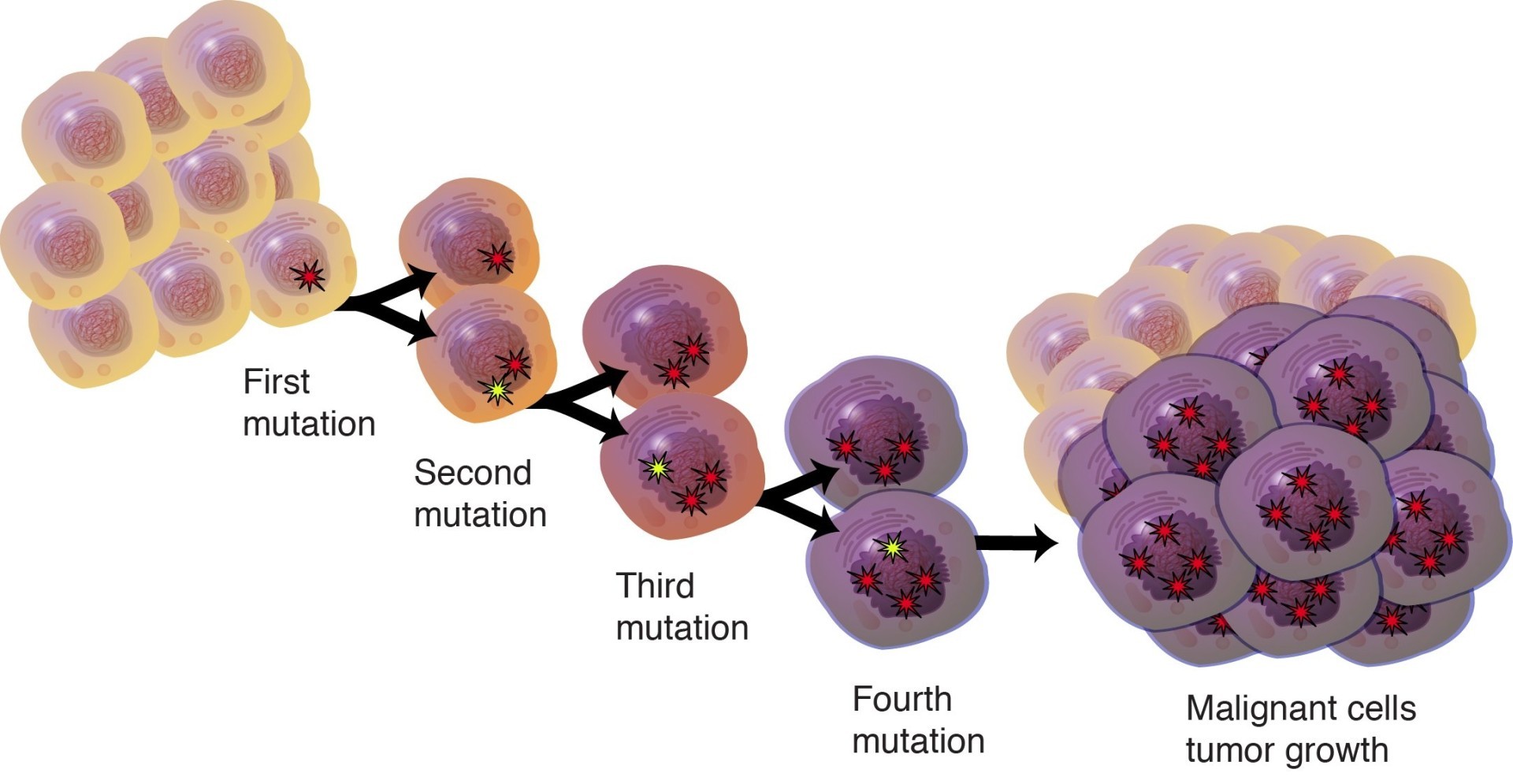Microsoft has united biologists and programmers to fight cancer

Under the influence of radiation, chemicals (cigarette smoke, etc.) there is a mutation of genes that regulate the growth and division of cells. If you do not notice the mutation at an early stage and do not destroy it, the mutant cells will continue to divide and accumulate mutations, up to the formation of a cancer tumor from highly mutated cells that do not have a restriction mechanism (cancer cells)
Scientists from Microsoft have set a serious task to solve one of the main problems of mankind - to defeat cancer. For example, in June of this year, they published a scientific paper in the Journal of Oncology Practice (doi: 10.1200 / JOP.2015.010504), in which they showed a method for the early diagnosis of pancreatic cancer by search queries. In the early stages, many forms of cancer are successfully treated. According to the researchers, it is possible to create an “inexpensive passive surveillance system” for users that will detect pancreatic cancer and, in the long term, other dangerous forms of cancer. The system of tracking and collecting personal data can work, for example, at the level of the operating system.
Now Microsoft has gone further. This summer, the company organized the first research laboratory , where it gathered a team of the best biologists, programmers and engineers. The task of the laboratory is to apply informatics methods to solve the problem of cancer.
“In fact, biology and computer science have a deep connection. In principle, these systems operate on the same fundamental principles, ”says Chris Bishop, director of the laboratory in the research division of Microsoft Research.
')
Researchers believe that cancer should be perceived as a bug in the computer system, and cancer cells can be reprogrammed and returned to their original healthy state.
DNA programming
For example, Microsoft is developing a DNA construct that can “live” inside cells and track failures at the cellular level. In the event of signs of a mutation that turns a healthy cell into a cancer cell, these small biocomputers initiate the “reset” process, which returns the cell to its original state. Microsoft biolab programmers have already developed a model for the Bio Model Analyzer , which emulates the behavior of a healthy cell. It can be compared with the behavior of the cell after mutation in order to develop a correction program that will later be incorporated into the intracellular DNA biorobot.
Bio Model Analyzer
This is just one of the studies being carried out at the new research laboratory Microsoft Research. For example, Microsoft also developed software that within a few seconds delineates the boundaries of a cancerous tumor in images taken after X-ray examination. Previously, radiologists had to manually do this painstaking work. The program compares pixel-by-pixel images taken at different times, and shows exactly how much the tumor has shrunk or grown. 3D scans of tumors from the program can even be printed out on a 3D printer, so that surgeons practice before performing a complex operation.
The team of biologists and programmers Microsoft is assembled in the department of bioinformatics Biological Computation Group , formed in 2007. Andrew Philips has been appointed as the head of the department. He suggests that "it will be technically possible in 5-10 years to create an intelligent molecular system that can detect cancer [at an early stage of the development of the disease]."
The estimates of the scientist should be treated with a certain degree of caution. As Randall Munro has aptly remarked , “technology, with up to 20 years left, will forever remain technology, with up to 20 years”.

At first glance, it seems strange that a software developer became interested in medical research. But this has a definite meaning, because medicine and computer science have long since become related disciplines. Suffice it to recall that the IBM Watson neural network learned how to diagnose certain diseases better than diagnostic doctors . The neural network from IBM works as part of the IBM Watson for Onkology project . Just look at the developments in wearable electronics, including implants, trackers and various sensors for continuous monitoring of health and vital signs.
Scientists believe that in the future, "smart" devices will constantly monitor the human condition, right down to the cellular level, and promptly identify potential problems. Such sensors will compare the parameters of the body with a reference template. If the body deviates from the template indicators - it should be studied and normalized. At first, non-invasive sensors can monitor a person’s physical activity, sleep quality and duration, and food consumption. They will collect these statistics for analysis.
Experts are quite optimistic about the prospects for the use of computational methods for the treatment of cancer. Early diagnosis is the key to everything. “If we learn to control and manage cancer, it will become the same as a common chronic disease, and then the problem is solved,” says Dr. Jasmin Fisher of the University of Cambridge. She believes that some types of cancer can be eliminated in 5-10 years.
Microsoft's desire to join the fight against cancer is welcome. It is a little strange that the company compares the disease with a bug in the software - and expects to eliminate it. After all, 35 years of Microsoft history have shown that the company is not very good at fighting bugs.
By the way, about the promise to destroy cancer in 5-10 years. In 2004, Bill Gates himself stated that spam would be destroyed in two years .
Source: https://habr.com/ru/post/397633/
All Articles